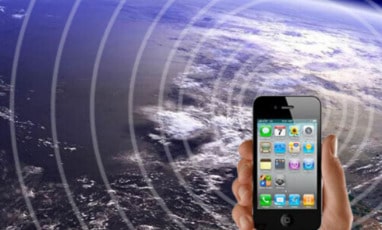The collection contains about 2,500 studies. The abstracts for these studies can be downloaded by clicking on the links below.
In 2011, the International Agency for Research on Cancer (IARC) of the World Health Organization classified radio frequency radiation “possibly carcinogenic to humans” (Group 2B). The IARC had planned to review RFR again by 2024 because most peer-reviewed studies published in the past decade found significant evidence that RFR causes genotoxicity; however this review has been postponed. IARC is likely re-classify RFR to either “probably carcinogenic to humans” (Group 2A) or “carcinogenic to humans” (Group 1) if IARC convenes EMF experts who have no conflicts of interest.
Cell phones and other wireless devices also produce static and extremely low frequency (ELF) electromagnetic fields. ELF was classified by the IARC as “possibly carcinogenic to humans” (Group 2B) a decade before RFR received this classification.
Summary of Results (January 2024)
Radio frequency radiation (RFR)
- 89% (n=316) of 354 RFR oxidative effects (or free radical) studies published since 1997 reported significant effects including 95% (n=82) of 86 studies with a SAR (specific absorption rate) ≤ 0.40 watts per kilogram (which is ten times less than the 4.0 W/kg threshold of harm that the FCC and the ICNIRP use to base their RFR exposure limits).70% (n=328) of 466 RFR genetic effects studies published since 1990 reported significant effects including 79% (n=113) of 144 studies of gene expression.
- 77% (n=333) of 435 RFR neurological studies published since 2007 reported significant effects.
- 83% (n=280) of 335 RFR reproduction and development studies published since 1990 reported significant effects. Among the studies that reported significant effects, 56 studies used an exposure with a SAR ≤ 0.40 W/kg and 37 studies had a SAR ≤ 0.08 W/kg.
Extremely low frequency (ELF) and static electromagnetic fields
- 91% (n=286) of 316 ELF/static EMF oxidative effects (or free radical) studies published since 1990 reported significant effects.
- 84% (n=288) of 344 ELF/static EMF genetic effects studies published since 1990 reported significant effects including 95% (n=168) of 177 studies of gene expression.91% (n=315) of 345 ELF/static EMF neurological studies published since 2007 reported significant effects.
- 75% (n=65) of 87 ELF/static EMF reproduction and development studies published since 1990 reported significant effects.
Links to download each set of abstracts (RFR = radio frequency electromagnetic fields ELF = extremely low frequency or static electromagnetic fields)
- RFR Oxidative Effects studies
- RFR Genetic Effects studies
- RFR Neurological Effects studies
- RFR Reproduction / Development studies
- ELF Oxidative Effects studies
- ELF Genetic Effects studies
- ELF Neurological Effects studies
- ELF Reproduction studies
- List of static / ELF low flux density studies that found effects
- Intermediate Frequency studies
This content is from Dr. Joel Moskowitz . Please see his regular updates at https://www.saferemr.com/
Environmental Health Trust is working towards meaningful policy change to protect he public and environment.
- Learn about wireless impacts to wildlife at wildlifeandwireless.org.
- Learn about how to reduce wireless radiation exposure in your home at https://healthytechhome.org.
Article: Update by Dr. Henry Lai: Majority of Studies Find Cell Phone and Wireless Radiation Effects
